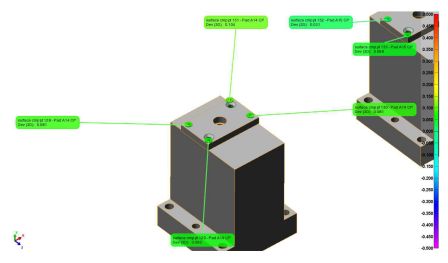November 4, 2024
Improving Construction Processes with 3D Metrology See the articleWhile carrying out a recent project that I was assigned to, I witnessed firsthand the benefits of Creaform’s HandyPROBE optical and portable CMM over mechanical CMM like Romer or Faro arm.
A few months ago, I visited Ranger Design, manufacturer of customized van racking and storage equipment for commercial vehicles to inspect jigs that they had built for a major car manufacturer. I had to inspect 2 jigs for 2 different vehicles in one day; the length of the jigs varied from 3 ft. to 15 ft.
Choosing the right inspection tool
The fact that the parts to QC were so different in size really complicated my work. Plus, we had never worked in this location. Except for part size and tolerances, I didn’t really know what to expect. That being said, I was not worried at all. I knew that the HandyPROBE, with its TRUaccuracy concept, would help me do a great job.
When I got there, the customer was shaky and doubtful, because the jigs were located on the shop-floor and close to an assembly line. He was afraid that the vibrations would interfere with our system and data accuracy. OK – he obviously didn’t know how the HandyPROBE worked! 😉 We saved 1 hour of work straight from the start since we did not have to move the jigs.
I plugged the system in, started to affix the adhesive positioning targets on the jigs. I could have used magnetic targets, but because there was a possibility that we would have to do some more work on the jigs later on, the adhesive targets were a better choice because I could leave them on the jig so to be able to align the referential to the part instantly the next time!
Client wants in!
The client wanted to see how the system worked. In fact, he was so intrigued by the process that he participated in the calibration of the HandyPROBE! What interested him the most was how to leapfrog so to inspect the complete large jig. You should have seen the smile on his face when he saw how easy and fast the process was. With a click of a button, I started target acquisition on the other part of the jig: 20 seconds later, I was done!
After aligning the referential to the jig, I went on with the probing measurement, and I got real-time feedback from the system for every feature I measured while the program was being automatically built. At the end of the day, the customer wanted to add some comparison points. We simply inserted them into the report, which took no time at all.










